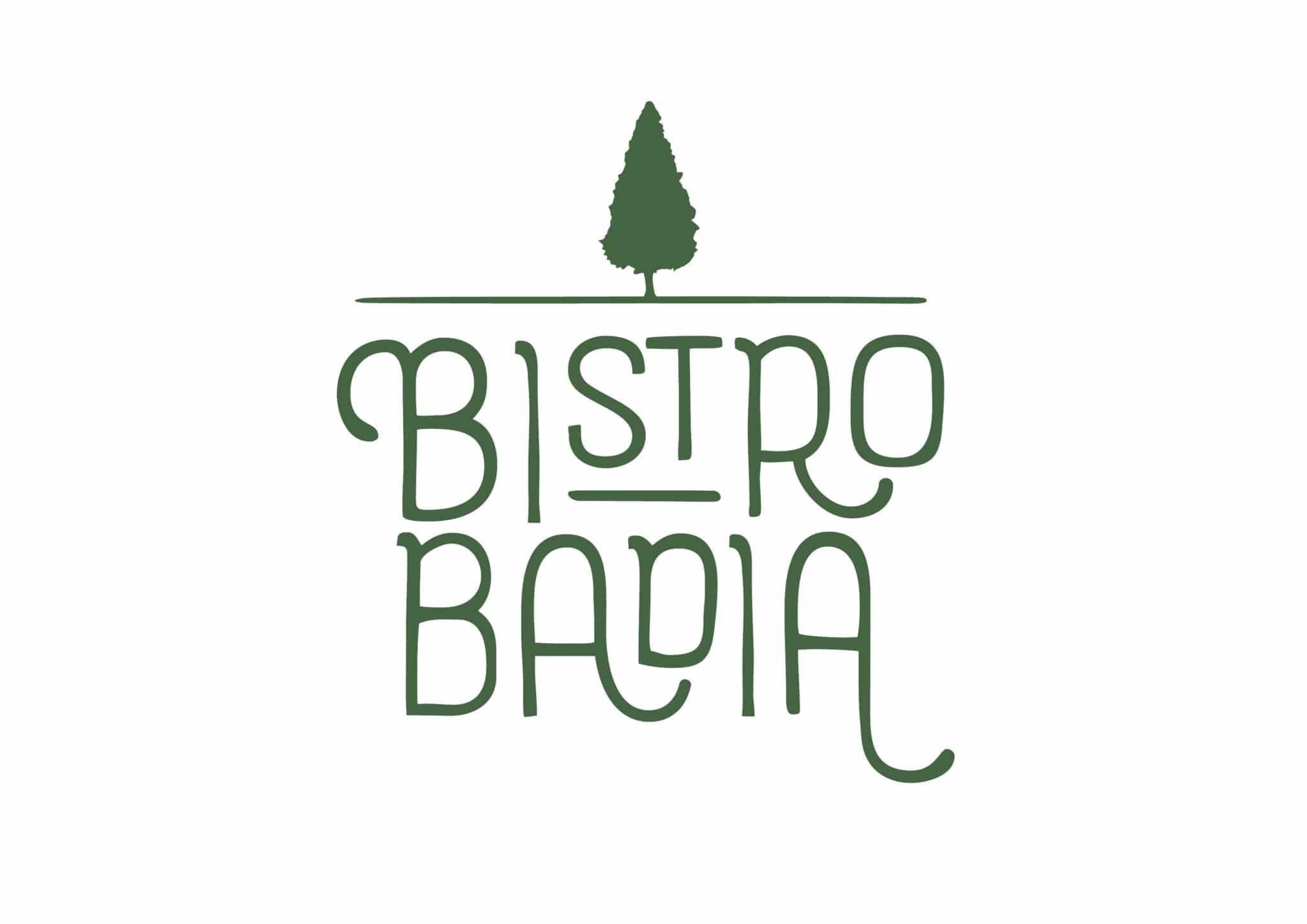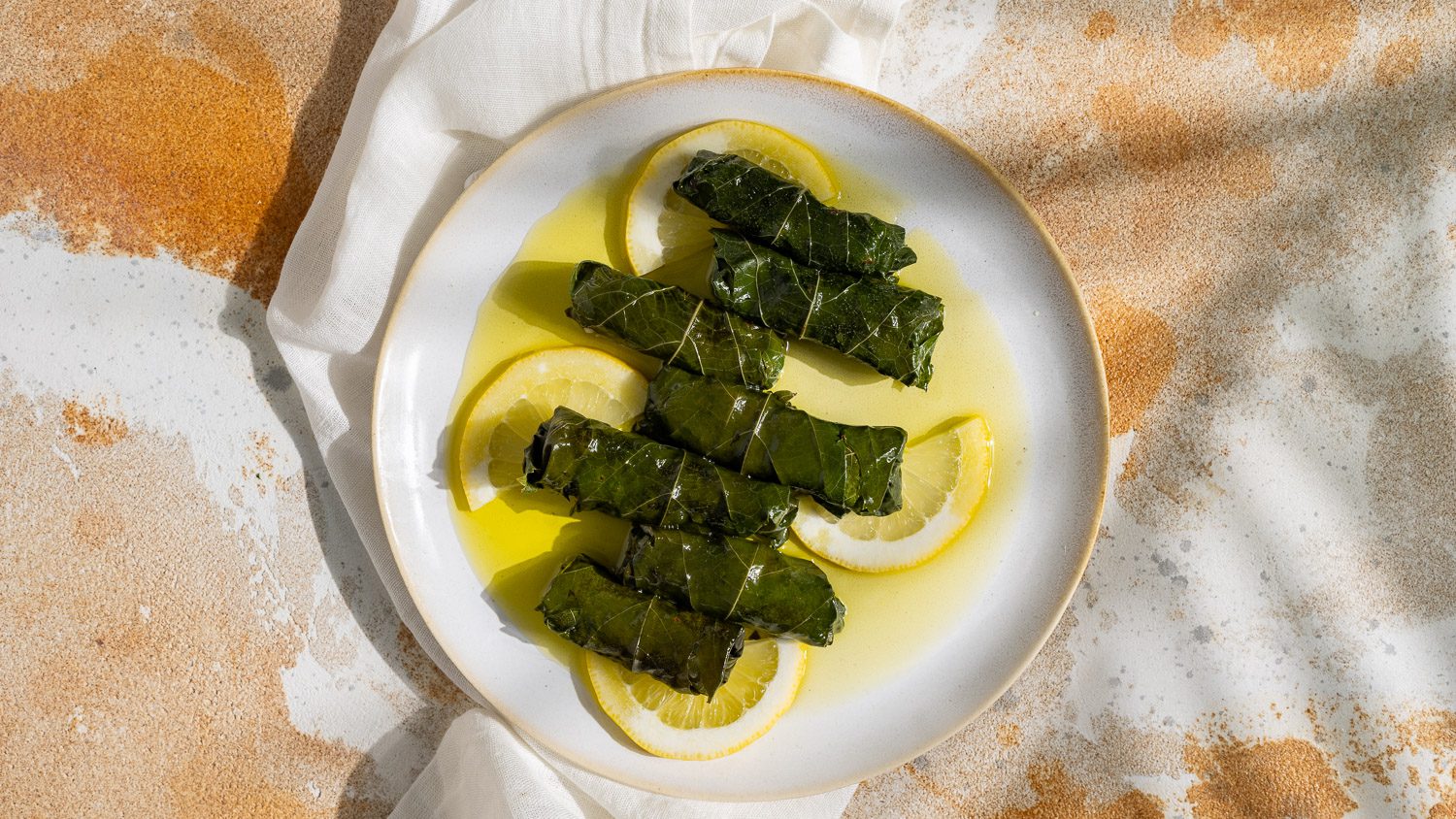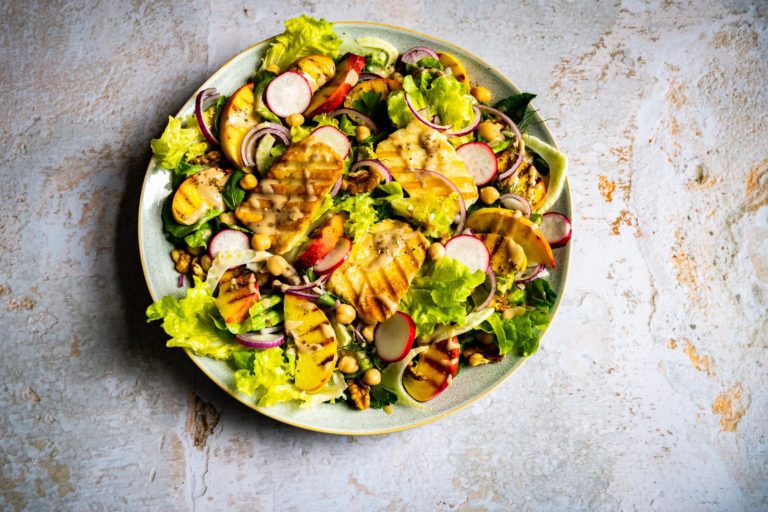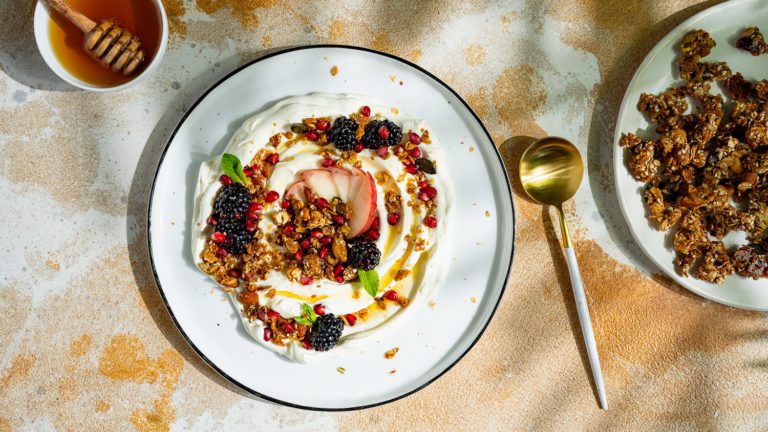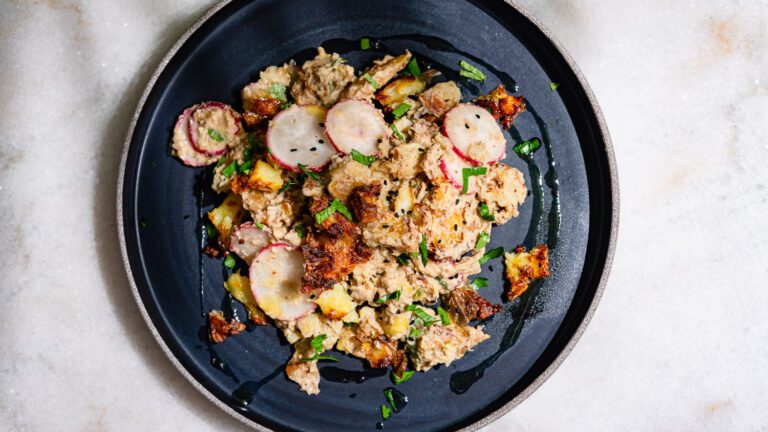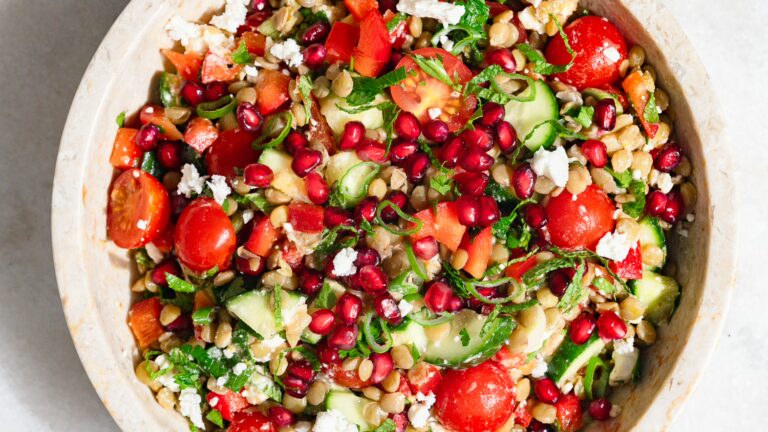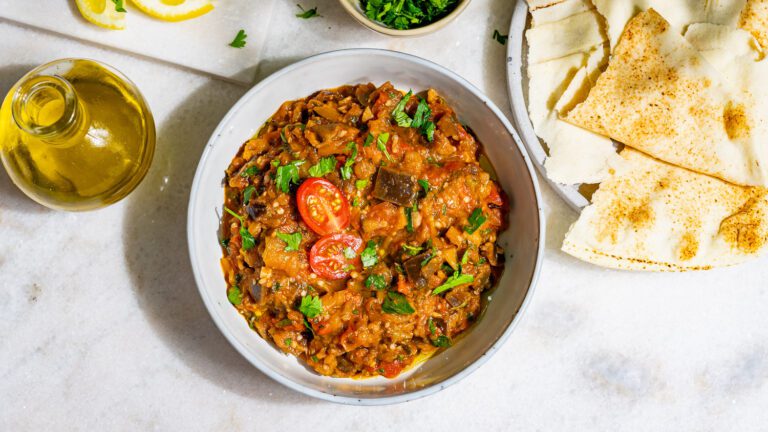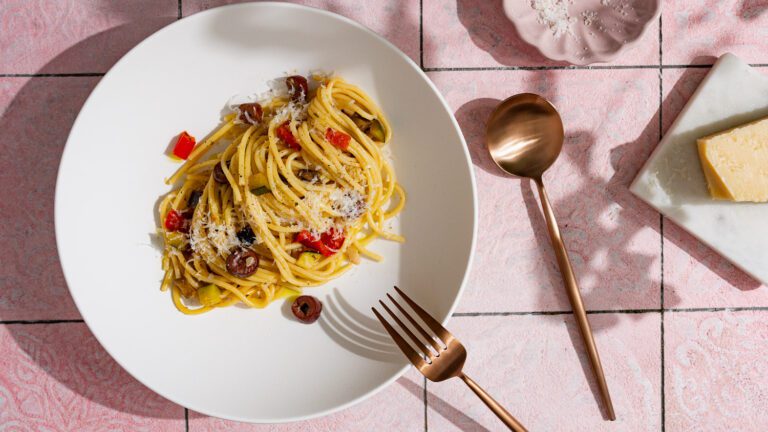Stuffed grape leaves | Warak Enab
Making stuffed grape leaves myself has been on my recipe list for a long time. And when I was standing at the delicatessen shelf in the supermarket the other day and saw all the little tins and jars, I immediately bought all the ingredients for stuffed vine leaves.
Now the time has finally come and I’ve whipped up this fantastic stuffed vine leaves recipe, a classic of Levantine cuisine! A perfect component for any mezze!
Ingredients for stuffed grape leaves
Basically, it’s really not difficult to make the stuffed grape leaves yourself. The filling is ready in no time at all and you can then start filling the vine leaves straight away.
My mother says the filling is like a kind of tabouleh with rice. She’s not entirely wrong, of course, because the ingredients and flavors are very similar. Because for the stuffed vine leaves with rice you need:
- Pickled grape leaves in brine: you can get these in jars or shrink-wrapped. Alternatively, you can also use fresh ones if you have some in the garden.
- Rice: you will need round grain rice for this grape leaf recipe.
- Vegetables: beef tomato and spring onions add flavor. The potatoes in the pot ensure that the vine leaves don’t burn – and are an ideal side dish.
- Herbs: fresh mint and parsley are a must.
- Spices: Cinnamon, pepper and salt refine the dish. The cinnamon note brings a touch of Levant to the dish.
- Olive oil: is used in almost every recipe. That’s why you should have a good, large bottle in the kitchen.
- Lemon juice: freshly squeezed, please. The acidity enhances the taste of the vine leaves.
So the ingredients for stuffed grape leaves are not extravagant, apart from the vine leaves perhaps. But you can now also get these in a well-stocked supermarket.
Preparation of stuffed grape leaves
When I made the stuffed vine leaves myself, I was a little impatient. I wanted to use the pickled vine leaves straight away and have them cooked after ten minutes. But don’t be as impatient as I was…
- Be sure to wash the leaves thoroughly before use. It is even better to rinse them and then soak them briefly in water. The reason: the vine leaves are soaked in salt and are therefore naturally brutally salty. Washing reduces the salt content.
- Simply spoon the filling onto each inserted grape leaf and roll it up. The whole process is then repeated until there is either no more filling or no more vine leaf. Of course, this is not something that can be done in five minutes, so take some time, listen to a podcast or an audio book and finish rolling the vine leaf roulades.
- Before the stuffed grape leaves end up in the pot, the base is first lined with potato slices. The slices protect the rolls from getting too hot. Sticking is therefore not an issue. The potato slices also taste great as they absorb all the flavors.
- And when you have wrapped the grape leaves and finally want to cook them, you should definitely give them their 50 minutes cooking time until they have a good consistency. Because they taste best when tender.
Please don’t worry, it may all sound a bit much at first, but the preparation is really child’s play. You just have to know what to look out for.
So now I hope you enjoy making your own stuffed vine leaves. If you liked the stuffed vine leaves recipe, please leave a review and if you have any questions or suggestions, let me know in the comments.
The recipe for homemade grape leaves

Ingredients
- 1 x pickled vine leaves in brine in jar or shrink wrapped
- 250 g Round grain rice
- 1 Flesh tomato
- 30 g Mint
- 50 g Parsley
- 2 Spring onions
- 1 TSP Pepper
- 1 TSP Salt
- 1 TSP Cinnamon
- 1 TBSP Olive oil
- 1 TBSP lemon juice for the filling
- 4 El Lemon juice To cook
- 3 Potatoes, waxy
Zubereitung
- Wash the vine leaves well under running water, as the leaves are very salty. If necessary, desalt them in water for a few minutes.
- For the filling, wash the rice, finely chop the herbs and spring onion, finely dice the tomato and then mix everything with the spices.
- To fill the vine leaves, take one leaf at a time, cut off the stalk and place a horizontal strip with 2 – 3 tsp of filling in the middle of the leaf. Then fold in the sides and roll up the leaf. Repeat until no more filling is left.
- Peel the potatoes and cut into slices about the thickness of a finger. Spread the slices on the bottom of the pot and layer the stuffed vine leaves on top.
- Pour water into the pot until the vine leaves are covered and bring to the boil. Then cook over medium heat with the lid closed for about 30 minutes.
- Add the lemon juice to boil and simmer with the lid half-open for another approx. 25 minutes.
- Leave the vine leaves to cool and then serve with olive oil and lemon as required.
Notes
Nährwerte
Stuffed grape leaves: warak enab, dolmades or sarma?
In Arabic, warak enab simply means vine leaves – that’s it. But sometimes you can also get them under the name “Warak Enab Mehshi” (stuffed vine leaves).
In Greece, the stuffed vine leaves with rice are called dolmades and in Turkey sarma. In the Levant, each region has its own recipe for the same dish. But homemade vine leaves are also popular in the Balkans and are known by names such as sarmale or dolma. In general, the names mean something like stuffed vegetables with rice or minced meat. Depending on what you fill them with.
What else can you do with grape leaves?
Do you still have a portion of grape leaves left? Then you can simply use them as a vegetable garnish in salads, soups or stews.
If you have picked the leaves yourself (preferably relatively young leaves, as these are more tender), you can blanch them and pickle them in brine. I will show you exactly how to do this in the articles Preparing vine leaves and Pickling vine leaves (to follow).
Can you freeze stuffed grape leaves?
Yes, you can do that. Leave the vine leaves filled with rice to cool and pack them in an airtight container. They will then keep for about 6 months in the freezer.
You can put them in the fridge to defrost and then warm them up by steaming them.
Try the stuffed grape leaves with minced meat or the stuffed zucchinis.
Follow me on Instagram for even more inspiration about Levante cuisine.
